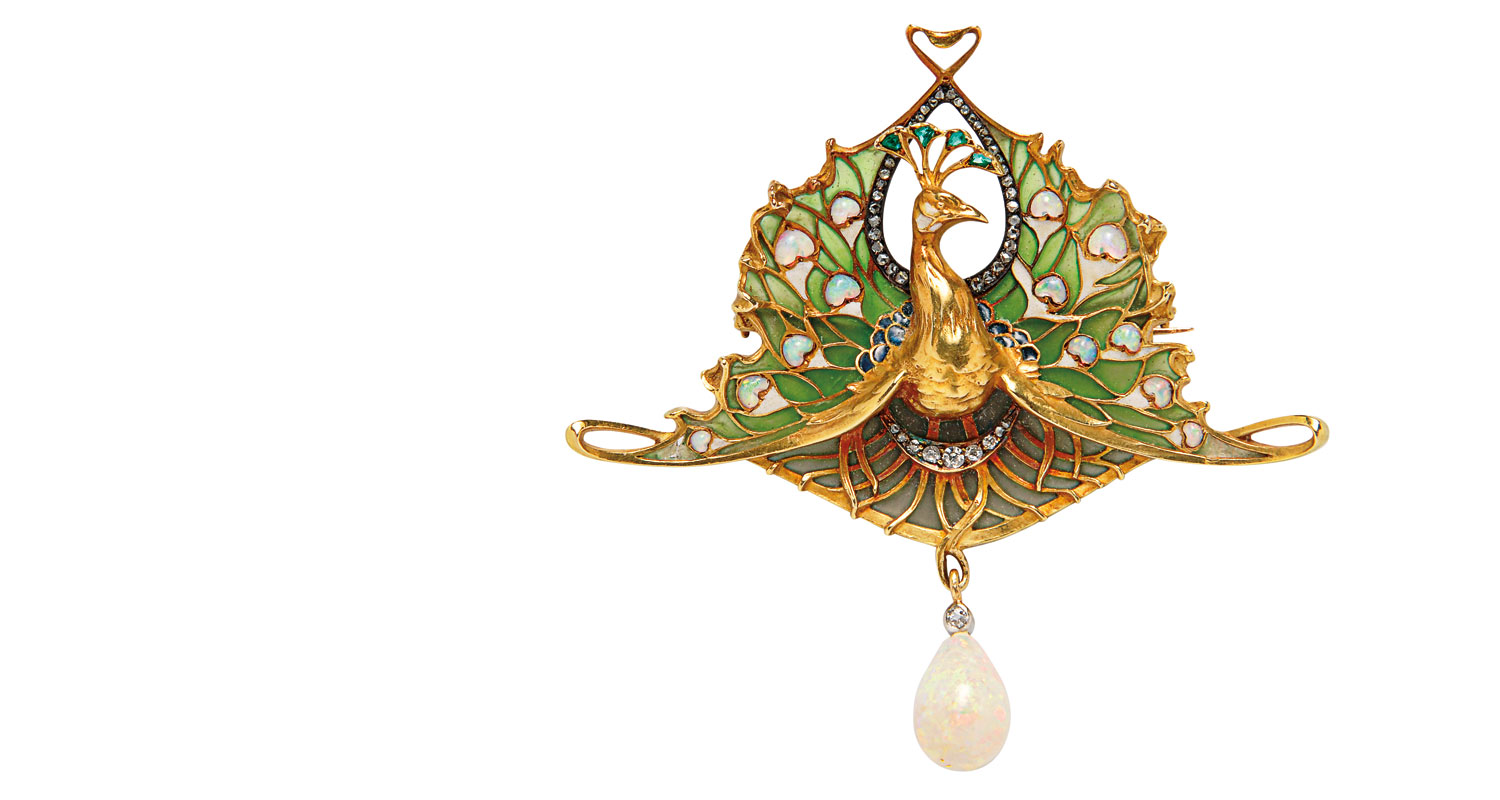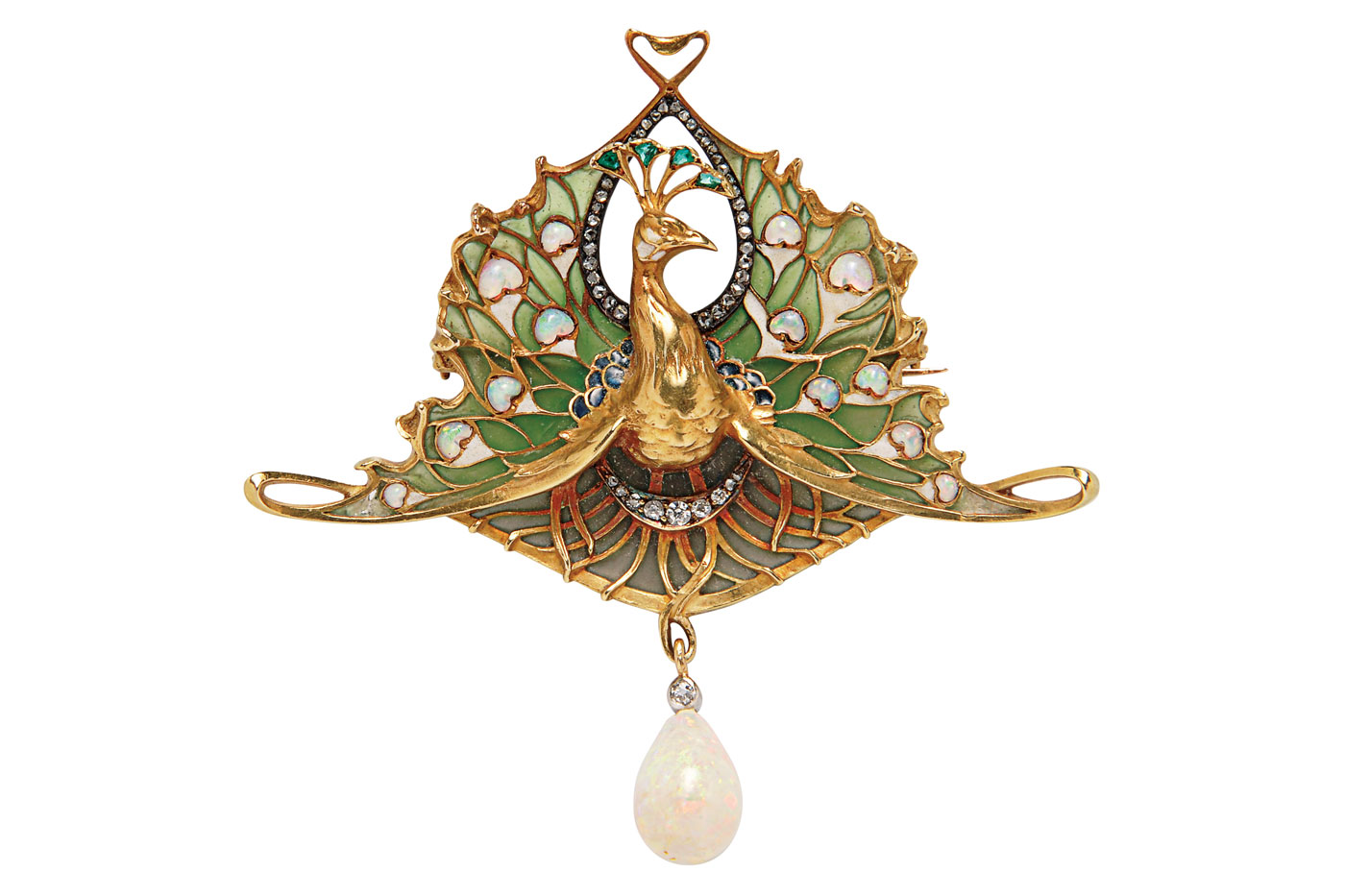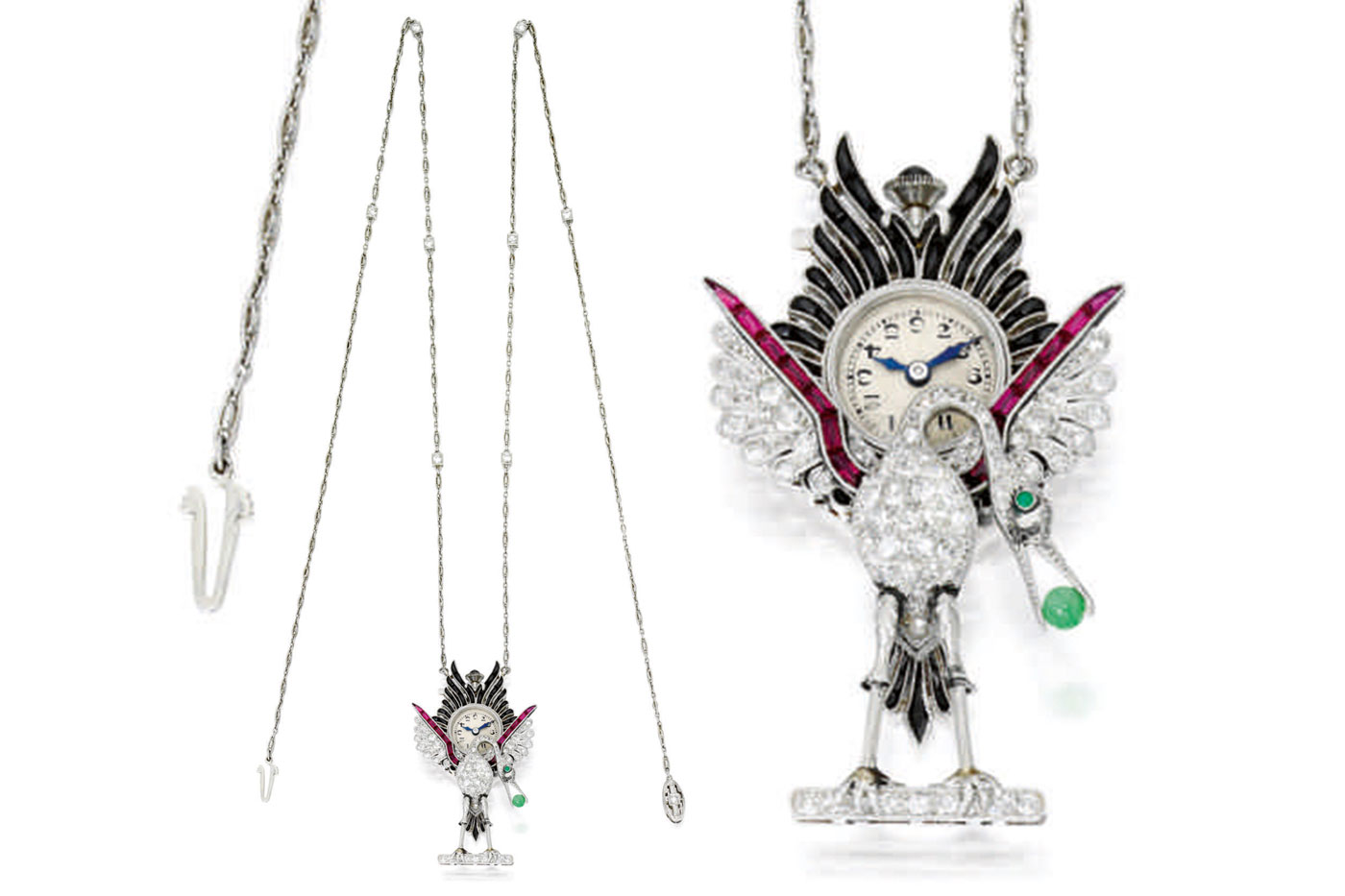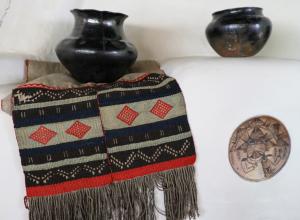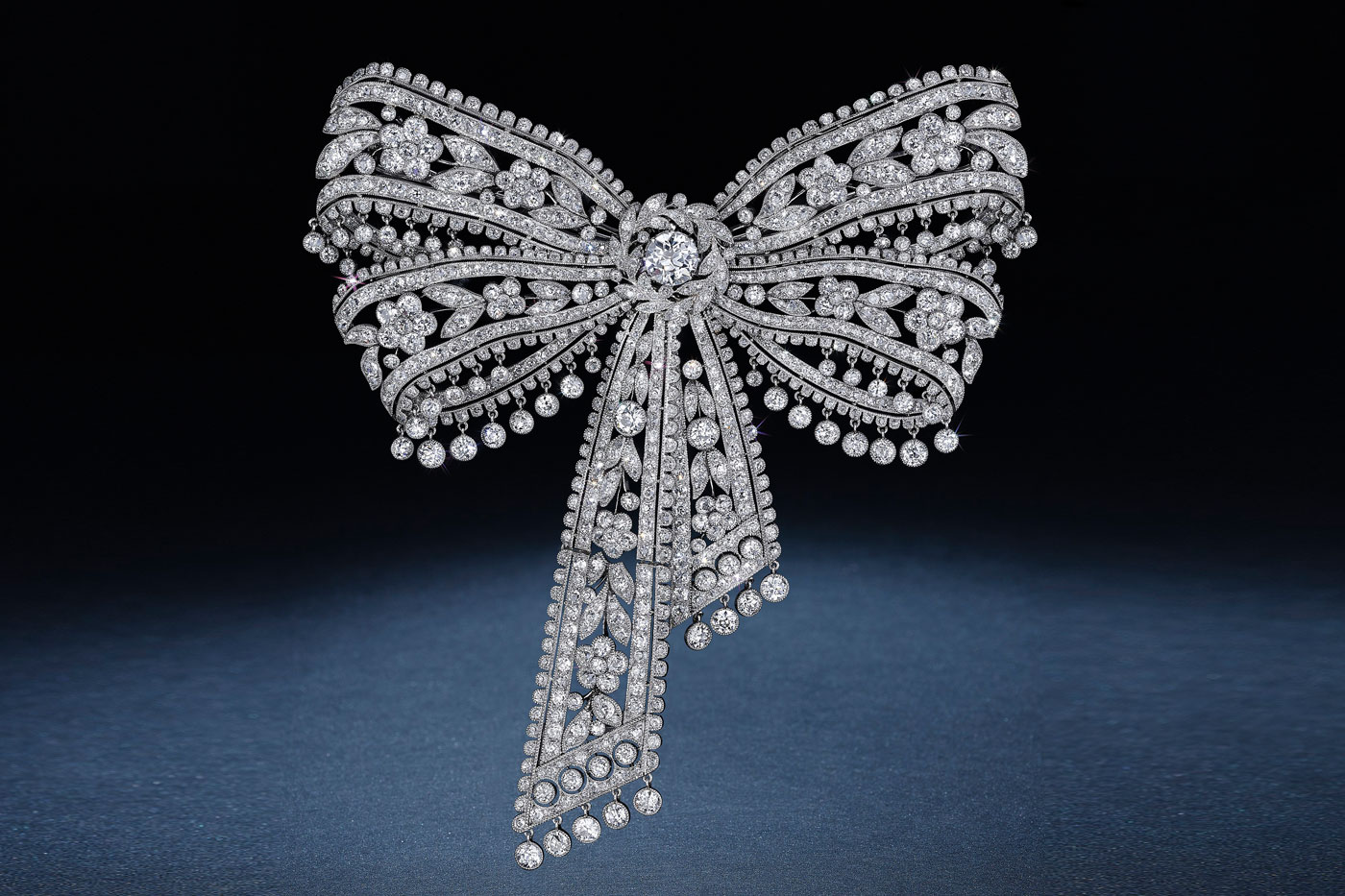
Diamonds and lace
Belle Époque Bow Brooch, $492,500
Christie’s New York, December 6, 2017
Remarkable craftsmanship, ingenuity of design, and a feeling for romance combine in this antique diamond bow brooch by Cartier circa 1904. The soft folds of the double loop brooch and the gently draped fringed ribbon ends belie the hard materials that comprise this large jewel. Epitomizing the Belle Époque era, the platinum and diamond brooch measures a substantial 4 ¾” by 4 ¼“, though its hefty size and weight would have been ably supported by the well-structured fashions of the day. The Belle Époque, an era roughly defined as the period between 1890 and 1914, came to an abrupt end with the onset of the First World War. A term applied by historians in hindsight, this “beautiful era” was a time of luxury for the privileged class, and most importantly, a time of peace. Coexisting in the same time period as Art Nouveau, these competing fashion modes offered women a clear choice of expression in style and design.
This exquisite brooch by Cartier, accompanied by a red leather case, was designed to be convertible. The trailing asymmetrical ribbons detach from the main double loop design. The loops of the brooch feature diamond-set and edged leaf designs. The articulated structure also features small diamonds hanging from the edges of the loops and the ribbons. Although the brooch is very large, the open-work design gives it a lacy, delicate appearance. Fetching nearly half a million dollars at auction, the sale showed that there is an appreciation for fine workmanship: the value of this piece of jewelry is in its make, not in the intrinsic worth of its diamonds.
Courtesy Christie’s Images.
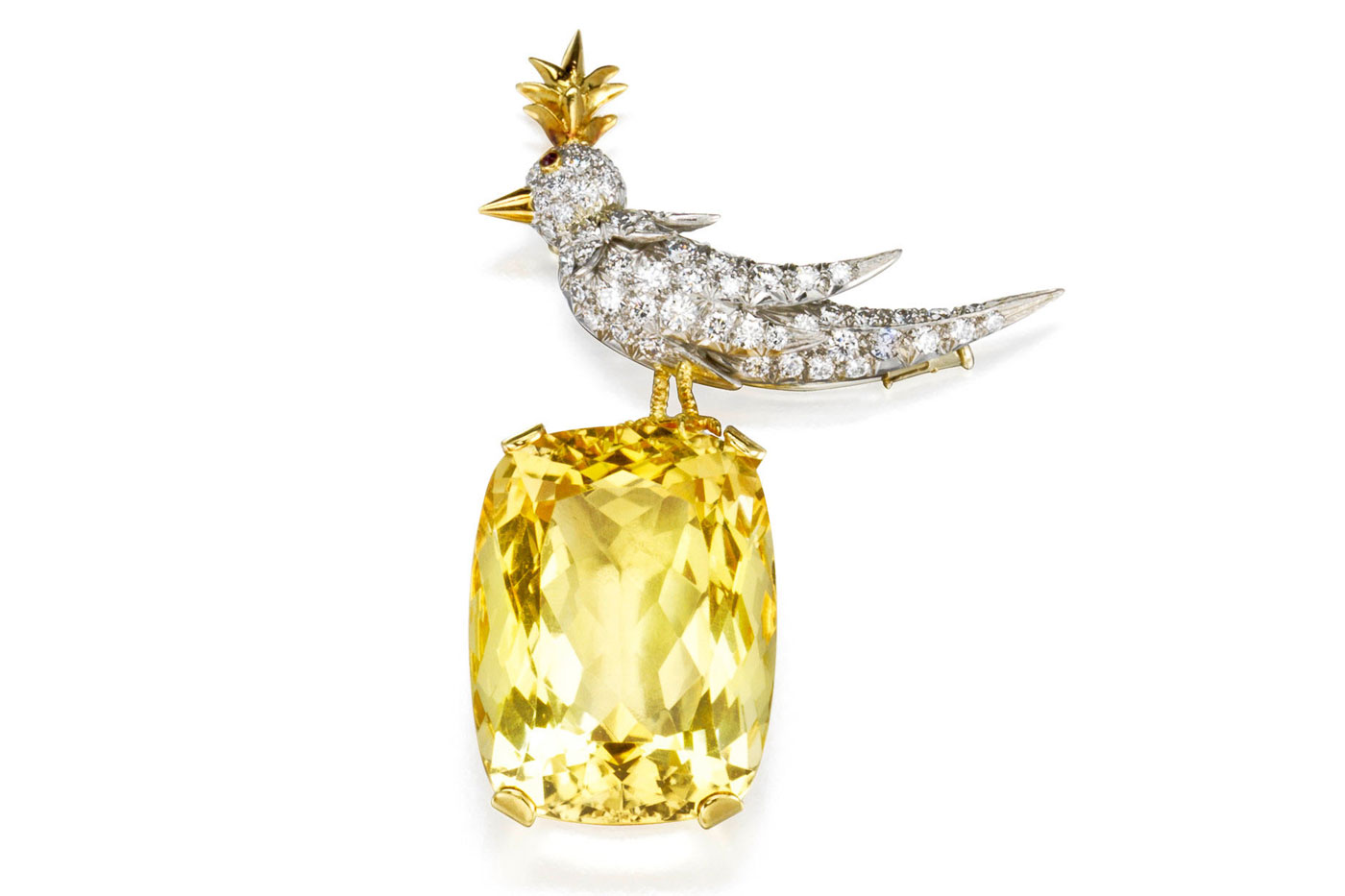
Feathered friends
Bird on a rock, $18,750
Bonham’s New York, December 4, 2017
“Iconic” doesn’t begin to describe this whimsical setting, modestly dubbed “Bird on a Rock,” created by renowned jewelry designer Jean Schlumberger for Tiffany’s best known stone, the 128.54 carat fancy yellow Tiffany Diamond. For 17 years this diamond, the ultimate symbol of the Fifth Avenue retailer’s reputation as the preeminent seller of fine diamonds, nested securely in a showcase to the left of the store’s main entrance. Alas, in 2012, the 82-facet modified cushion cut diamond flew away from its setting and was remounted in an elegant diamond necklace, also by Schlumberger.
Do not despair. From time to time, an authentic replacement comes to auction for those seeking to wear a piece of the rock, or at least, a fine facsimile. Tiffany has made versions of the original through the years, using various gemstones as the rock. In the most recent auction season, several of these birds came to roost at once. Among the versions on sale was this beautiful citrine example, sold at Bonham’s for $18,750. It closely resembles the original both in the color of the gemstone as well as its multi-faceted cut. The 54-carat citrine is a fine stand-in for the priceless original – priceless because it was never up for sale. This perky diamond bird sports a yellow gold coxcomb, adding to its jaunty appearance. Sotheby’s New York sale on December 7, 2017 saw the bird perched on a cushion-cut amethyst, with one ruby eye set into its all-diamond feathered body. This colorful example sold for $25,000, well above its pre-sale estimate of $10,000-15,000. And finally, at least for this season, another bird, this one with its 18k gold feet firmly planted on a deep orangy-yellow citrine flew higher than all the rest, making $55,921 at Christie’s Hong Kong sale on November 28.
Courtesy Bonham’s





